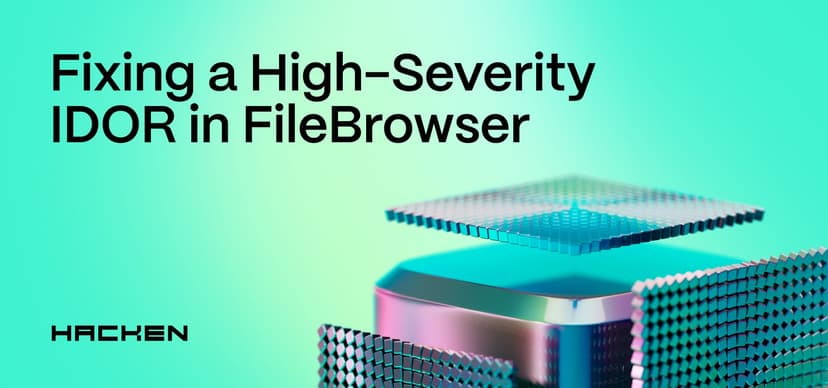Enterprise adoption of blockchain presents significant opportunities but introduces complex cybersecurity challenges that demand C-suite attention. While the technology promises decentralization and efficiency, the transition from Web2 requires navigating immature security practices and novel threat vectors. Failure to address these risks proactively leads not just to financial loss, but to severe reputational damage, regulatory penalties, and erosion of stakeholder trust.
This guide focuses on the strategic imperatives for CISOs and CTOs: understanding the evolving threat landscape beyond code-level flaws, integrating security into operations, and navigating the complex compliance environment to secure your blockchain initiatives.
Shifting Threat Landscape: Operational Failures Outweigh Code Flaws
In 2024 alone, crypto hacks and scams led to over $2.9 billion in total losses, with access control exploits accounting for $1.72 billion 75% of all hack-related damage, up from 50% in 2023.
The data shows conclusively that the most devastating financial losses (e.g.,$1.46B Bybit incident) stem from operational security failures – compromised keys, inadequate multi-sig procedures, and insider threats. These process flaws, not code vulnerabilities, are the primary attack surface demanding CISO/CTO-level governance.
Operational & Governance Risks:
- Access control & custodial risk: Compromised keys and weak multi-signature wallet management remain primary vectors for catastrophic loss.
- Governance attacks: Manipulating decision-making processes, treasury attacks, rug pulls.
Actionable tips:
Implement rigorous, audited multi-signature policies (separation of roles, hardware security modules, regular access reviews). Mandate adherence to standards like CCSS for all key management processes, including vendor solutions.
Smart Contract Vulnerabilities
While proportionally causing fewer direct losses now, code flaws remain critical, often enabling larger operational exploits. Common types include reentrancy (e.g., The DAO hack $50M+), access control violations (Poly Network $600M+), flash loan attacks (Beanstalk $76M), oracle manipulation (e.g., Vee Finance $34M), logic errors or deprecated functions (e.g., Wormhole $320M), token supply issues (e.g., Ankr aBNBc infinite mint), and denial of service (e.g., Parity Wallet freeze).
Actionable tips:
Mandate multiple independent audits before deployment and after significant upgrades. Integrate static/dynamic analysis (SAST/DAST) and fuzzing into the DevSecOps pipeline. Require formal verification for critical financial contracts.
Infrastructure & Interoperability Risks
Vulnerabilities in the supporting infrastructure create broad risks:
- Bridge exploits: Historically major targets (though improving), focus on cross-chain asset transfer risks (e.g., Ronin Bridge $624M).
- Oracle risks: Reliance on external data creates attack vectors (manipulation, single points of failure).
- MEV (Maximal Extractable Value): Transaction ordering manipulation (front-running, sandwich attacks).
- UI attacks: Phishing, DNS hijacks targeting users.
- Blockchain-level risks: Core network failures, 51% attacks (rare but possible).
Actionable tips:
Implement vendor due diligence for bridges and oracles. Use multiple oracle sources and time-weighted average pricing (TWAP). Implement front-end security best practices (CSP, input validation, anti-phishing training). Include blockchain layer availability in BCP/DR planning.
Navigating the Regulatory Landscape
Regulations are rapidly evolving to address blockchain risks. Key frameworks include:
FATF Travel Rule mandates Virtual Asset Service Provider (VASP) information sharing during transfers.
Europe (MiCA & DORA):
- MiCA: Establishes a unified EU licensing framework, stablecoin regulations, and investor protection rules, requiring secure code and audits.
- DORA: Mandates comprehensive digital operational resilience for financial entities (including crypto firms), demanding robust ICT risk management, incident response capabilities, and mandatory Threat-Led Penetration Testing (TLPT). Non-compliance carries severe penalties.
Other key jurisdictions: Growing scrutiny from US regulators (SEC/CFTC) and developing frameworks in regions like MENA (UAE's ADGM/VARA frameworks).
Essential standards: Frameworks like ISO 27001, NIST Cybersecurity Framework, PCI DSS, and particularly the CryptoCurrency Security Standard (CCSS) provide actionable controls.
Actionable tips:
Don't treat compliance in a silo. Mandate the integration of crypto-specific scenarios (e.g., smart contract exploits, wallet compromises, bridge failures, oracle malfunctions) into your enterprise-wide ICT risk management framework, incident response plans, and business continuity/disaster recovery testing.
Actionable Risk Mitigation
Security must be integrated throughout the blockchain initiative lifecycle (DevSecOps) and informed by threat modeling specific to your enterprise use case.
Core Mitigation Strategy Components:
- Audits & testing: Multiple, independent smart contract audits, blockchain protocol audits, penetration testing (Web, Cloud, Mobile, Network), dApp audits, tokenomics audits, and ongoing bug bounty programs.
- Monitoring & response: Implement 24/7 real-time on-chain monitoring (anomaly detection, threat intelligence). Have a documented and tested incident response plan. Use tools like Hacken Extractor for automated detection and response.
- Operational controls: Strict key management (CCSS), multi-signature wallets for treasury/critical functions, secure data storage (encryption, avoid global access).
- Governance & financial controls: Decentralized token holdings where applicable, clear policies (token issuance, locking), internal accounting controls, regular financial reporting, Proof of Reserves (PoR) for transparency if holding customer assets.
- User-facing security: Prioritize secure UI/UX design and accessibility (WCAG). Conduct pre-deployment testing, provide targeted user education and clear communication channels.
- Talent & training: Ensure security teams possess blockchain-specific expertise or partner with specialized firms. Provide targeted security training for relevant personnel on operational risks.
Enterprise Blockchain Security Checklist
- Establish strong governance & transparency.
Feedback channels, audits, financial reporting, secure treasury. - Implement proactive risk management & monitoring.
Threat models, real-time monitoring, stress tests, regulatory tracking. - Enforce robust technical security controls.
Vulnerability assessments, audits (smart contract, pen testing), secure channels, standard adherence (OWASP, CCSS). - Secure oracle integrations.
Redundancy (multiple sources/oracles), TWAP, update/removal capability. - Maintain incident response & business continuity.
24/7 capability, automated alerts, BCP/DR plans. - Integrate financial & accounting controls.
Internal controls, documented practices, reconciliation, staff competency, capital reserves. - Ensure user & asset protection.
Slippage limits, protocol health monitoring, due diligence. - Mandate regulatory compliance.
KYC/AML, asset classification, CCSS for custodians, legal awareness.
Conclusion
For enterprises venturing into blockchain, robust security isn't optional; it's fundamental for building trust, ensuring compliance, and achieving sustainable success.
Be proactive. Implement these strategies before an incident forces your hand. Leverage expert audits, continuous monitoring, regulatory compliance, and a security-first culture to navigate the Web3 landscape safely.



